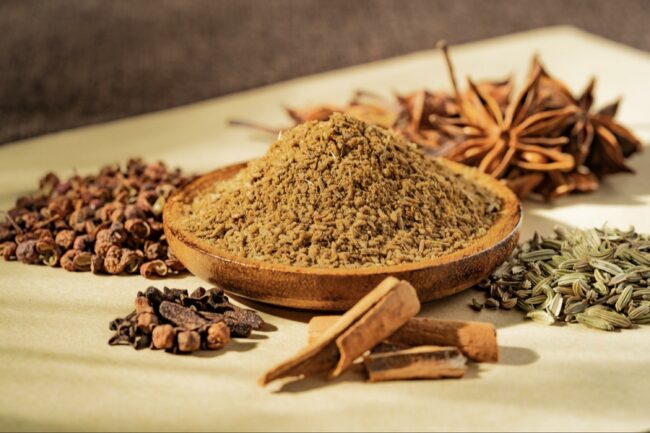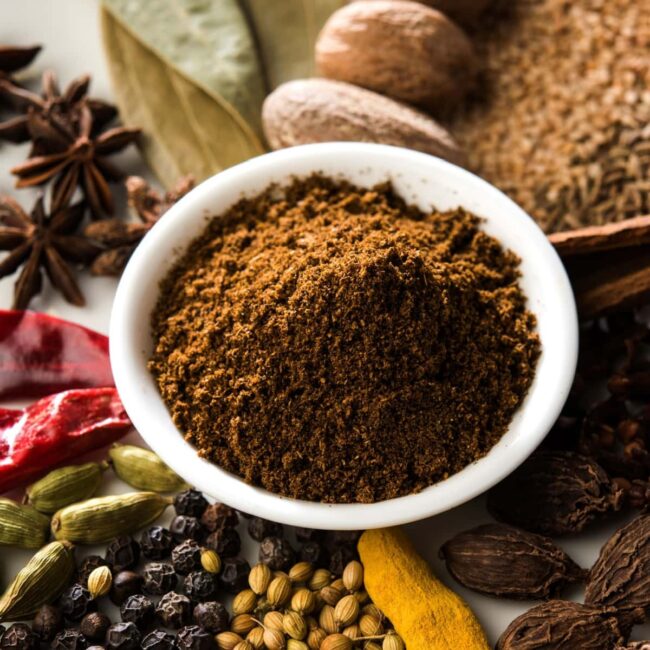Aromatic Chinese 5-Spice Substitutes
Chinese five-spice combines sweet, spicy, and aromatic elements to create a bold seasoning for various dishes.
When a replacement is necessary, spice blends with anise, cinnamon, and peppery warmth can achieve a similar effect.
Some choices emphasize licorice-like notes, whereas others highlight the earthy heat.
Matching the right intensity ensures that the dish retains its signature fragrance.
A
What Is Chinese Five-Spice?
Chinese five-spice powder serves as a key ingredient in many Asian dishes.
This aromatic blend combines various spices, creating a rich flavor profile that includes sweet, sour, bitter, umami, and warm notes.
Star anise adds a fragrant sweetness while Szechuan peppercorns introduce an earthy and citrusy taste with their unique numbing sensation.
Cloves contribute warmth with their intense aroma; cinnamon brings in comforting sweetness reminiscent of baked goods; fennel seeds offer strong anise-like flavors that enhance the mix.
Experimenting with different spices can lead to personal variations of this classic blend.
Recipes might incorporate white or black peppercorns or even ginger for added depth.
Common Substitutes and Their Characteristics
Garam Masala, a blend from India, shares spices like cinnamon and cloves but adds cardamom and cumin too.
This mix gives a warm taste but lacks the numbing sensation of Sichuan peppercorns.
Another option is Baharat from the Middle East, which includes paprika and allspice along with other spices for a sweet warmth in dishes like marinades or stews.
Allspice stands alone with its unique notes of cinnamon and nutmeg; while it doesn't match the complexity of 5-Spice, it still enhances recipes with its sweet-spicy flavor.
Making Your Own Five-Spice Blend
A balanced mix of flavors creates the essence of homemade Chinese 5-spice.
Adjusting spice ratios allows for personal preferences, so adding more pepper can increase heat or using extra fennel seeds can introduce a nuttier taste.
Whole spices may be substituted with ground versions if necessary, like swapping whole star anise for ground star anise.
Start by gathering key ingredients: two whole star anise, one cinnamon stick (Chinese preferred), two teaspoons of fennel seeds, two teaspoons of whole cloves, and two teaspoons of Szechuan or Tellicherry peppercorns.
Break the cinnamon stick and star anise into smaller pieces before placing all ingredients in a spice grinder to achieve a fine powder after grinding for several minutes.
Using Five-Spice and Substitutes
Exploring the unique qualities of Chinese 5-spice and its alternatives opens up new avenues in cooking.
This spice blend works wonderfully in both sweet and savory dishes, enhancing flavors and adding depth.
A DIY blend can be crafted using star anise, cloves, cinnamon, fennel seeds, and Sichuan peppercorns to match personal preferences.
Rub the spices onto meats like chicken or pork before cooking for a flavorful experience or mix them into marinades with oil or soy sauce for added richness.
Incorporating this blend into stews and soups during simmering enriches these meals further; starting with a little allows for adjustments based on taste preferences.
Common substitutes such as allspice offer warmth while garam masala provides an Indian twist.


